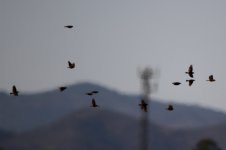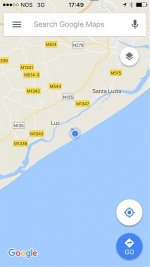Gonçalo Elias
avesdeportugal.info

Hi all,
I am pleased to announce that I have found two new populations of Lesser Short-toed Lark in Portugal. The first population was found at Armona island, Olhão, on March 29th and the second at Tavira island, Tavira, on April 10th. Both populations consist of several pairs (maybe 10+) and it is quite possible that they have been there for a long time, remaining unnoticed for many years, as both are located in remote parts of the islands, which are not regularly visited by birders or ornithologists.
Both islands are what we call "barrier islands" (sandy islands with open sea on the outer side and saltmarsh / ria on the inner side).
I have been able to confirm breeding at the latter place and hope to do so at the former during the next few days.
So far the species was only known from a single location - the sapal de Venta Moinhos in the northeastern sector of the Castro Marim reserve.
I am pleased to announce that I have found two new populations of Lesser Short-toed Lark in Portugal. The first population was found at Armona island, Olhão, on March 29th and the second at Tavira island, Tavira, on April 10th. Both populations consist of several pairs (maybe 10+) and it is quite possible that they have been there for a long time, remaining unnoticed for many years, as both are located in remote parts of the islands, which are not regularly visited by birders or ornithologists.
Both islands are what we call "barrier islands" (sandy islands with open sea on the outer side and saltmarsh / ria on the inner side).
I have been able to confirm breeding at the latter place and hope to do so at the former during the next few days.
So far the species was only known from a single location - the sapal de Venta Moinhos in the northeastern sector of the Castro Marim reserve.





